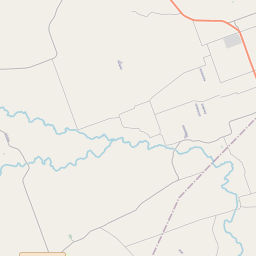Briggs State Bank
Historical marker location:






Briggs State Bank
The Briggs State Bank was chartered on May 27, 1909. Constructed that spring, this limestone and brick building is typical of a commercial architecture style once popular in Texas. It features a three-bay front with central entry and transoms, and decorative brickwork detailing. The bank and town flourished for fifteen more years, with an economy centered on cotton and wool production. In the mid-1920s, changing agricultural practices weakened the local economy. After a massive fire destroyed much of the town, including most of the businesses on this street, the bank closed in 1928, a year before the Great Depression.
Recorded Texas Historic Landmark - 2002
As one of the most visible programs of the Texas Historical Commission (THC), historical markers commemorate diverse topics in Texas history, including: the history and architecture of houses, commercial and public buildings, religious congregations, and military sites; events that changed the course of local and state history; and individuals who have made lasting contributions to the state, community organizations, and businesses.
The Johnson Space Center, located in Houston, played a crucial role in the development of the U.S. space program. It was here that NASA trained its astronauts and mission control teams, and it continues to be an important center for space research and exploration today.
During the mid-1800s, the county played a significant role in the development of Texas. It served as a route for settlers heading west to other regions and became a popular stop for travelers. The town of Burnet, the county seat, grew steadily and became a center for trade and commerce.
In the late 19th century, Burnet County experienced a boom when the railroad reached the area in 1882. This new mode of transportation brought an influx of people and helped to stimulate economic growth. Agriculture, particularly the production of cotton, flourished during this time. The county also saw the establishment of various businesses, schools, and churches.
In the 20th century, Burnet County continued to evolve. It became known for its scenic beauty and recreational opportunities, attracting visitors from all over. The area also played a role in World War II, as Camp Bowie, a military training facility, was built in the county. Today, Burnet County remains a vibrant community with a mix of historical significance and natural beauty, offering residents and visitors a unique experience.
Burnet County Timeline
This timeline provides a condensed summary of the historical journey of Burnet County, Texas.
- 1848: Burnet County is established by the Texas legislature and named after David G. Burnet, the first president of the Republic of Texas.
- 1852: The first permanent settler, Reuben Hornsby, arrives in the area.
- 1854: The town of Burnet is designated as the county seat.
- 1861-1865: Burnet County residents serve in the Confederate Army during the American Civil War.
- 1870: The population of Burnet County reaches over 2,000.
- 1873: The Austin and Northwestern Railroad is completed, connecting Burnet County to other parts of Texas.
- 1882: The Texas Legislature establishes the first marble quarry in Marble Falls, bringing economic growth to the county.
- 1937: Lake Buchanan is completed, becoming the first of several reservoirs built in Burnet County to provide water and hydroelectric power.
- 1984: The Highland Lakes chain, a series of six reservoirs including Lake Buchanan, becomes a major tourist attraction in Burnet County.
- 2008: The historic Burnet County Courthouse, built in 1884, is restored and reopened to the public.